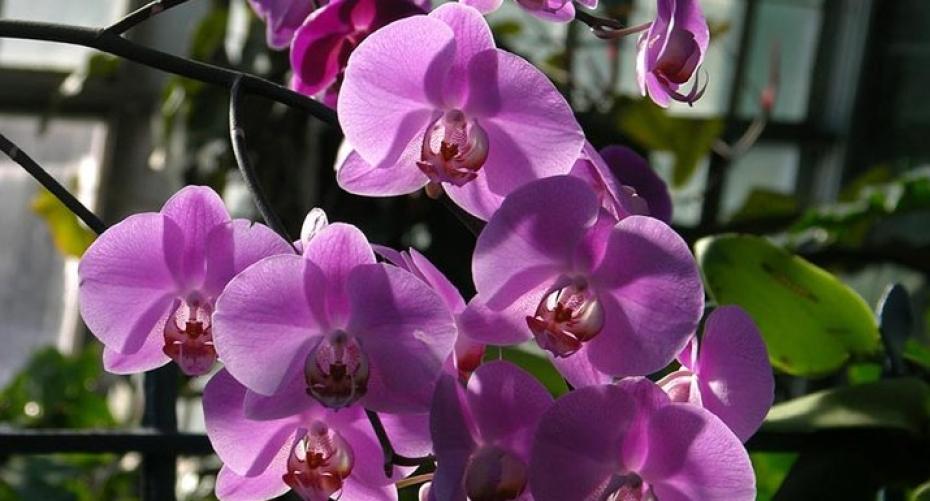Most popular orchid; long lasting and loves central heating
They are a member of one of the most numerous, diverse and widespread plant families; with the majority coming from the tropics. They are epiphytic; anchoring themselves to tree branches high in the forest canopy. During the rainy season they get rained on continually and in the dry season just get the early morning mist, with the rest of the day being hot. Being in the forest canopy means that they receive dappled sunlight. It is these conditions that you must try and replicate in your own home.
Light
Good but indirect light, only put in a south facing window in winter.
Temperature
Avoid dropping below 15C (59F) in winter and ensure at least a 5C increase during the day. Summer temperature should be around 26C (79F). Keep out of draughts and heat sources (fires, radiators). Central heating is ideal for these plants.
Watering
Only water if the roots are silvery grey, if the roots are green it does not need watering. Immerse in tepid water for a few seconds, you should see the roots go green almost immediately. Allow to drain.
Feeding
Feed with a dedicated orchid bloom feed every other watering. Make up a solution and dip the plant in it for a few seconds. It is important to use just water every other watering in order to avoid a build-up of salts which can fatally damage the roots. Never feed a high nitrogen feed as this will only produce leaves and the aim with Phalaenopsis is to have it almost continuously in flower.
Re-potting
This should only be done if the pot is crammed with roots and they are coming over the top of the pot, approximately every 2 years. If the orchid compost has started to break down and is holding too much water it may be necessary to take all the old compost out and replace with fresh. Only re-pot into the next size up; they may not flower if the plant has too much space for roots in the pot.
Re-flowering
Always sacrifice the last 2 flowers on the stem when they are still fresh. Cut the spike back to just above the next node down the stem. This should put out a side flower spike in 2 – 3 months. If you wait until all the flowers on the spike have finished before you cut it back




![Kingsbury-bench-05[1].jpg](http://www.hayesgardenworld.co.uk/cdn/shop/files/Kingsbury-bench-05_5B1_5D.jpg?v=1712162737&width=1500)
![Kingsbury-bench-01[1].jpg](http://www.hayesgardenworld.co.uk/cdn/shop/files/Kingsbury-bench-01_5B1_5D.jpg?v=1712161065&width=1500)
![tw17a-4947_0[1].jpg](http://www.hayesgardenworld.co.uk/cdn/shop/files/tw17a-4947_0_5B1_5D.jpg?v=1712161495&width=1500)
![tw17a-4947_tenbury_5ft[1].jpg](http://www.hayesgardenworld.co.uk/cdn/shop/files/tw17a-4947_tenbury_5ft_5B1_5D.jpg?v=1712161172&width=1500)
![tw17a-4952_tenbury_4ft[1].jpg](http://www.hayesgardenworld.co.uk/cdn/shop/files/tw17a-4952_tenbury_4ft_5B1_5D.jpg?v=1712161034&width=1500)
![thumbnail_IMG_1565-kik_2[1].jpg](http://www.hayesgardenworld.co.uk/cdn/shop/files/thumbnail_IMG_1565-kik_2_5B1_5D.jpg?v=1712226536&width=1500)
![thumbnail_IMG_1565-kik_1[3].jpg](http://www.hayesgardenworld.co.uk/cdn/shop/files/thumbnail_IMG_1565-kik_1_5B3_5D.jpg?v=1712159637&width=1500)



![WD-XgESA[1].jpeg](http://www.hayesgardenworld.co.uk/cdn/shop/files/WD-XgESA_5B1_5D.jpg?v=1712159609&width=1500)